1. Technological challenges
1.1. Resource management
1.1.1. 1. Used hypergraphs to show resources and their relations 2. All the resources are represented by vertices and similarly, edges are used to represent their relationships 3. Defined 6 operations on Hypergraphs
1.1.2. 1. Suggested use of software agents 2. Proposed Cougaar as a scalable and distributed multiagent architecture to support resource management 3. A plug-in is described as a software module that forms the application logic, to be added into an agent
1.1.3. 1. Proposed smart object framework 2. This framework is capable of identifying and monitoring the status of things, and therefore, the structure of the network is decided accordingly
1.1.4. 1. Proposed a specific architecture for a specific IoT application 2. Proposed the use of cloud architecture for the smart vehicular networks 3. They rely on the concept of sharing the resources
1.2. Architecture and heterogeneity
1.2.1. Technological challenges
1.2.2. 1. Use the concept of discovery services. 2. Discovery service consists of a Well defined database and a collection of web service interfaces.
1.2.3. 1. Suggests OSI-model like architecture. 2. Ubiquitous services on an end-to-end basis
1.2.4. 1. Layered architecture for the IoT 2. Authors described five layers
1.2.5. 1. Edge technology layer 2. Access gateway layer 3. Internet layer 4. Middleware layer 5. Application layer
1.2.6. 1. M & DC (Management and Centralized Data Centre) 2. NoS (Networks and Sensors) resembling
1.2.7. 1. Considered viewpoints of users, developers, service providers and the network providers. 2. Interfaces, supporting protocols and required standards are defined
1.2.8. 1. Network device 2. Network topologies 3. Network configuration 4. Various forms of data representation, 5. IPv6 addressing scheme
1.3. Efficient data handling
1.3.1. 1. Proposed “data exchange among large-scale heterogeneous network elements” 2. Offered the view that it is very critical to handle the exchange of data within a vast heterogeneous network
1.3.2. 1. Data collection, 2. Computer assisted mass appraisal/ CAMA based data collection model
1.3.3. KnowledgeDiscovery in Data (KDD) bases
1.3.4. 1. Devices to collect data 2. Prevailing technologies
1.4. Security and privacy
1.4.1. 1. Data use, 2. Access data 3. Times period 4. Delivery of data
1.4.2. 1. Access policy 2. Resource recognition 3. Resource valuation 4. Threat recognition 5. Access declaration 6.Privilege definition 7. Encryption
1.4.3. Suggested that privacy and security are two upcoming research issues in the paradigm of IoT
1.4.4. 1. Secure and efficient code dissemination protocol 2. Reliable and secure multicast protocol 3. RFID security and WSNs security
1.4.5. Segmental and sectional security
1.4.6. 1. Data collection 2. Data quantity 3. Ownership of devices
1.4.7. 1. Cloud provider 2. Categorisation of users
2. Societal challenges
2.1. Talent breach
2.1.1. 1. Heterogeneity 2. Scale 3. Big data functions
2.2. Disapproval of the novel paradigm by masses
2.2.1. 1. Survey on the perception of people 2. Identify information regarding challenges in IoT 3. Work is referred to as Critical Societal Services (CSS)
2.3. User-friendliness
2.3.1. 1. Sensing 2. Data collection 3. Data exchange 4. Data processing 5. Data storage
3. Environmental challenges
3.1. Power consumption
3.1.1. 1. Latency 2. Novel battery approach 3. Common platform for sensor data
3.1.2. 1. Energy harvesting for efficient energy supply 2. Use of photovoltaics 3. Thermoelectric generators
3.2. Failure tolerance
3.2.1. 1. Middleware layer 2. Energy consumption 3. Reliable packet delivery
3.3. Economy and cost
3.3.1. 1. Semi-passive RFID 2. Smart grid 3. Smart metering
